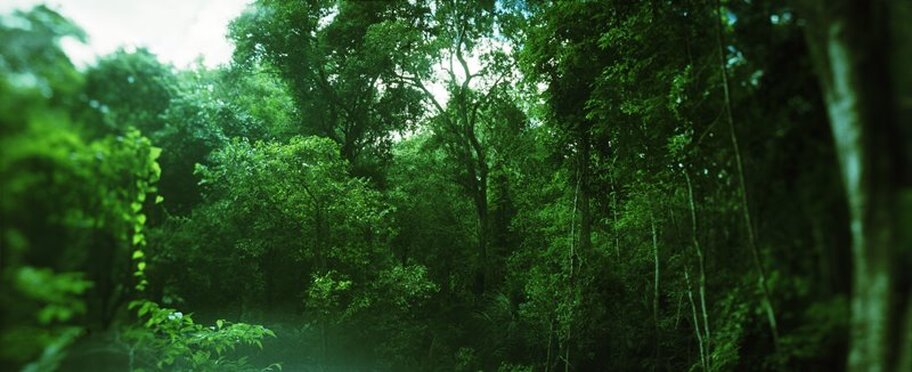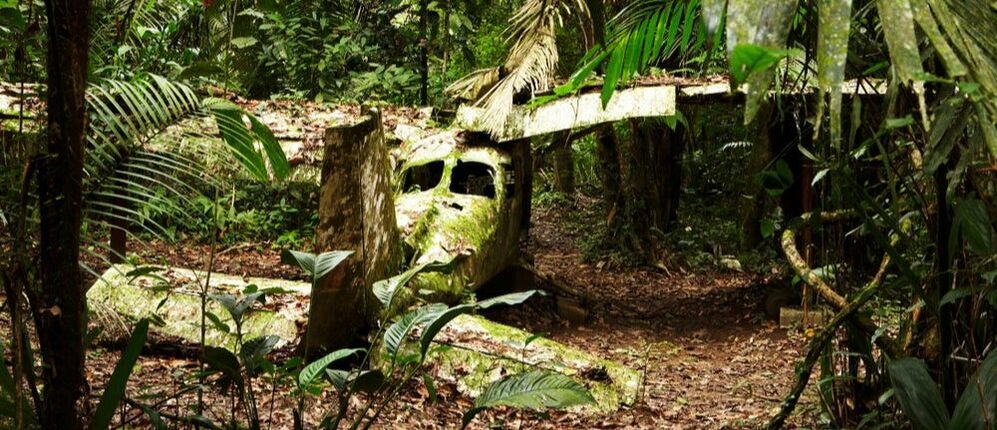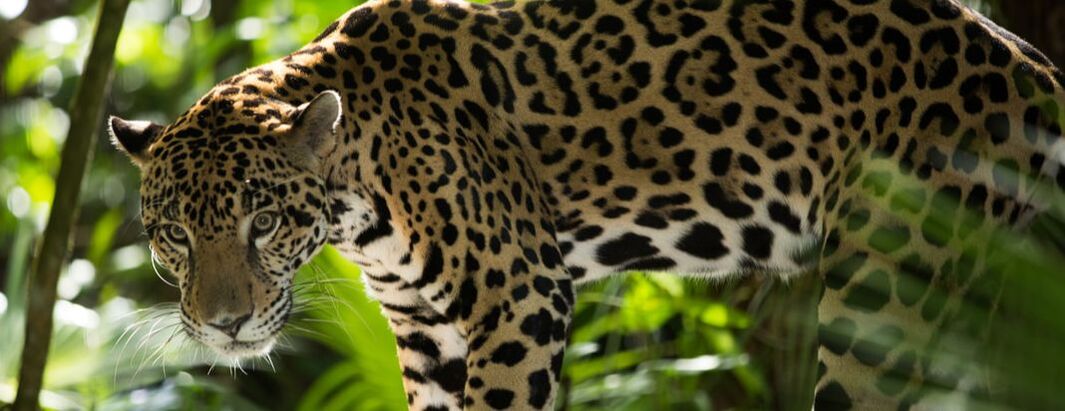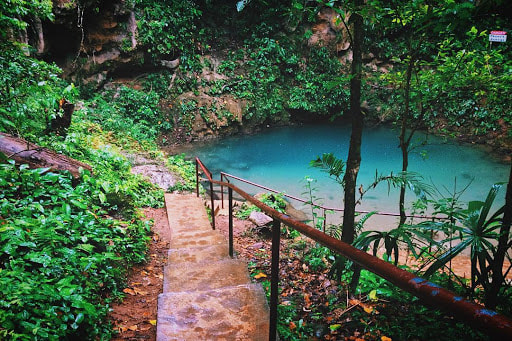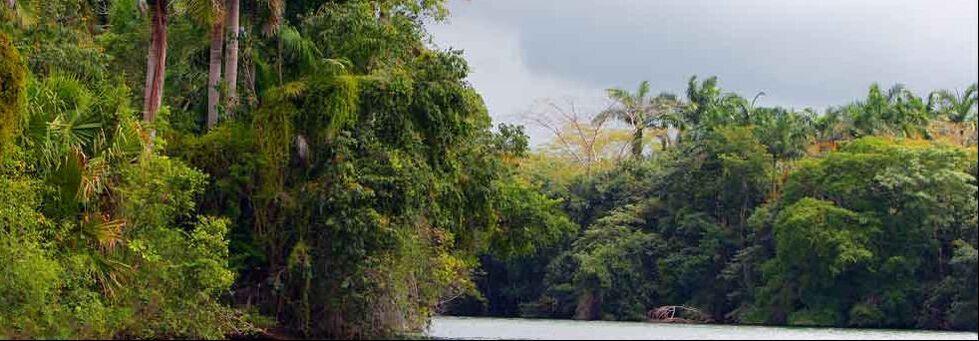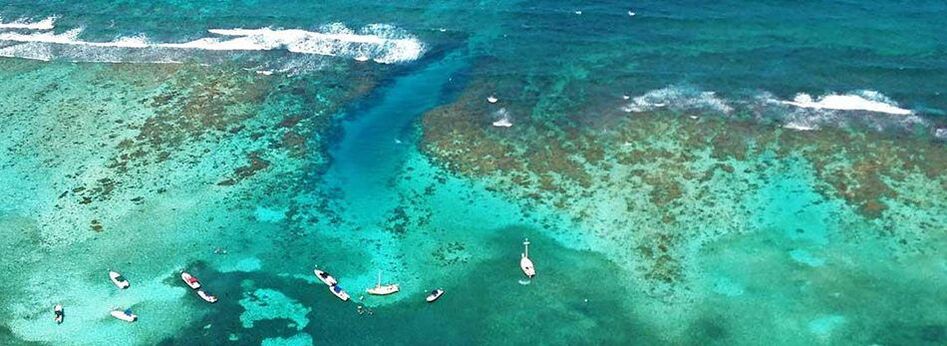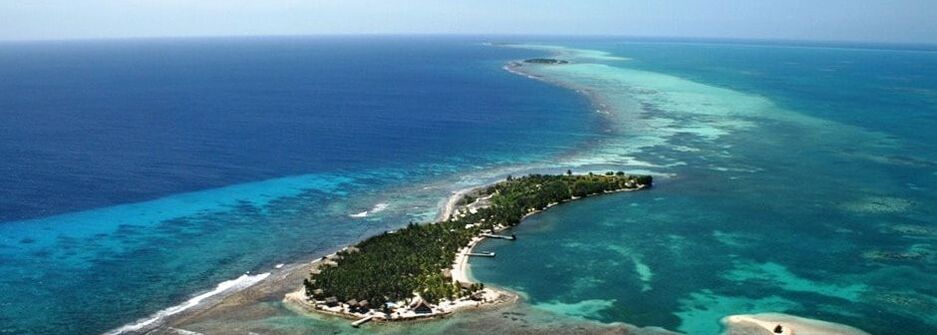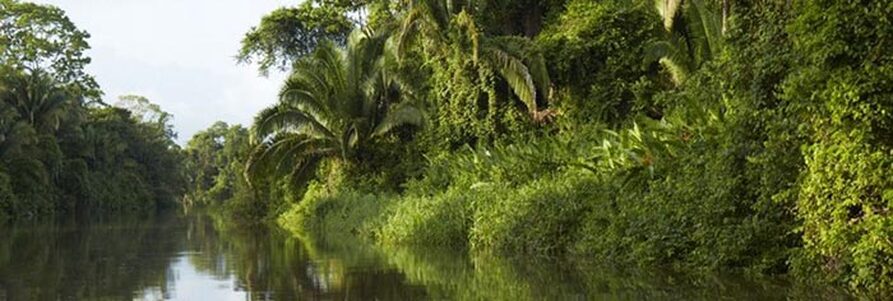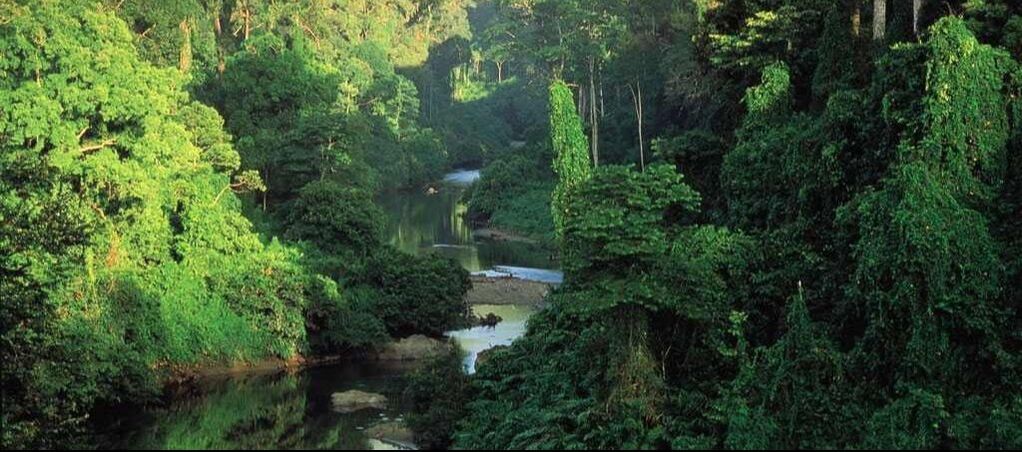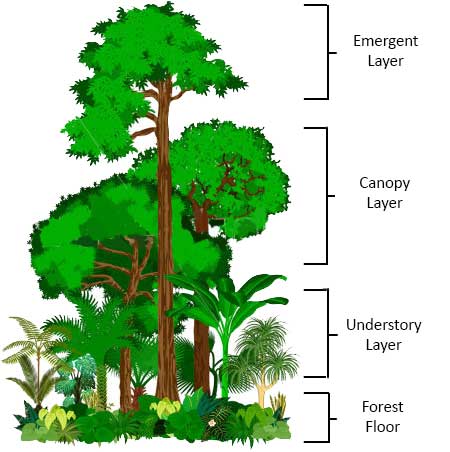JUNGLES IN BELIZE
Over 40% of Belize has been dedicated to National Parks or Reserves by the Belize Government. Making Belize the top travel destination in the world, for seeing animal and marine wildlife.
THE BELIZE GOVERNMENT
TAKING PROTECTIVE MEASURES TO PROTECT IT'S NATURAL TREASURES
Between 1990 and 1992, some 535,235 acres were put under permanent protection by Belize, including more than 200,000 acres of tropical forest in the Chiquibul region; 6,000 acres of mangrove wetlands in the Burdon Canal zone; and 97,000 acres of critical watershed in the Bladen Nature Reserve. During that same period, the Cockscomb Basin Wildlife Sanctuary (the world's only jaguar refuge) was expanded from 3,600 to 102,000 acres. Since then, Belize has added more parks and reserves, including designation of the entire 75-square mile Glover's Reef Atoll as a marine reserve and of the 23-square mile Bacalar Chico area as a combination marine reserve and national park.
Belize has shown remarkable leadership in protecting tropical forests and marine resources, and many Belizeans deserve credit for these positive actions. Now the government is shifting its attention from establishment of parks and protected areas to long-term, on the ground area management. In order to accomplish this, the country's natural resources need to pay for themselves.
Belize has shown remarkable leadership in protecting tropical forests and marine resources, and many Belizeans deserve credit for these positive actions. Now the government is shifting its attention from establishment of parks and protected areas to long-term, on the ground area management. In order to accomplish this, the country's natural resources need to pay for themselves.
NATIONAL PARKS
Chiquibul National Park
Cockscomb Jaguar Sanctuary - National Park
Why should you visit the Cockscomb Basin Wildlife Sanctuary?
This unique sanctuary in southern Belize covers an area of about 250,000 acres or 150 square miles of tropical forest, and is the world's only Jaguar Preserve. Declared a Forest Preserve in 1984 and finally a Jaguar Preserve in 1986, the park is the culmination of many years of work and perseverance by individuals and national and international organizations. The park area is a natural wonderland, richly endowed with breathtaking waterfalls, mountains, nature trails and rivers, creating the perfect environment for species to thrive in harmony. As the only jaguar reserve on the planet, these cats keep company with hundreds of neo-tropical birds, other wildcats, deer, tapir, reptiles, insects, amphibians and all manner of other sanctuary inhabitants. You might not see all of them but you could spot their tracks on trails and river banks.
This unique sanctuary in southern Belize covers an area of about 250,000 acres or 150 square miles of tropical forest, and is the world's only Jaguar Preserve. Declared a Forest Preserve in 1984 and finally a Jaguar Preserve in 1986, the park is the culmination of many years of work and perseverance by individuals and national and international organizations. The park area is a natural wonderland, richly endowed with breathtaking waterfalls, mountains, nature trails and rivers, creating the perfect environment for species to thrive in harmony. As the only jaguar reserve on the planet, these cats keep company with hundreds of neo-tropical birds, other wildcats, deer, tapir, reptiles, insects, amphibians and all manner of other sanctuary inhabitants. You might not see all of them but you could spot their tracks on trails and river banks.
Blue Hole National Park
FOREST & NATURE RESERVES
Columbia River Forest Reserve
Burdon Canal Nature Reserve
MARINE RESERVES
Hol Chan Marine Reserve
Why should I consider visiting the Hol Chan Marine Reserve?
Hol Chan Marine Reserve offers some of the best snorkeling in the entire country of Belize. Because this is a protected marine reserve, fish and marine life have been able to multiply in great numbers. A typical snorkeling trip will allow you to see numerous shoals of fish, green eels, eagle rays, manta rays, sea turtles, giant gropers, octopus, and nurse sharks. There is an abundance of coral life, from brain corals, fan corals, stag-horn coral and tube corals. This is a very popular family adventure and children love it, because they are guaranteed to see and experience many wonderful things below the surface.
Hol Chan Marine Reserve offers some of the best snorkeling in the entire country of Belize. Because this is a protected marine reserve, fish and marine life have been able to multiply in great numbers. A typical snorkeling trip will allow you to see numerous shoals of fish, green eels, eagle rays, manta rays, sea turtles, giant gropers, octopus, and nurse sharks. There is an abundance of coral life, from brain corals, fan corals, stag-horn coral and tube corals. This is a very popular family adventure and children love it, because they are guaranteed to see and experience many wonderful things below the surface.
Bacalar Chico Marine Reserve
Glover's Reef Marine Reserve
Exploring the Belize Rainforest
In overlooking the endless sea of emerald green, it is nearly impossible to imagine that 1,200 years ago this whole region had been converted to agriculture and silviculture. Satelite mapping data have revealed the outlines of ancient farmers' fields and irrigation trenches proving that intensive use of the land had spared very little of the original forest. According to plant biologist C.F. Cook, "Truly virgin forests seem not to exist in Central America. Relics of ancient agricultural occupation seem now where to be lacking even in regions now entirely uninhabited, in dense forests as well as in open desert regions." Botanists believe that the present composition of the forest at TIkal is largely due to Mayan silviculture. By the time conquistador Herman Cortez visited the area, in 1525, the rain forest had already grown back and looked very similar to how it looks today. Nature is very resilient and, given the chance, forests can return to areas once degraded by unwise human development.
Technically speaking, the forest found in the northern half of Guatemala's Peten Province is referred to as Tropical Moist Forest, differing somewhat from true rain forest due to the existence of marked wet and dry seasons. The limestone plains of Peten include a vast region with abundant examples of both arid and tropical flora. Much of the plant life is identical to that of the Yucatan Peninsula and includes many endemic species. Broad-leave forests of mahogany, yellow taberbuia, cedar, sapodilla (from which the chicle base for chewing gum is made), and giant buttressed ceibas compete with strangler figs and are covered in a profusion of huge philodendrons, orchids, lianas, monsteras, and bromeliads. Lakes, wooded swamps, undrained sinkhole ponds, or aguadas, and stretches of grassland and savannah are scattered throughout the forest. Since very little sun can reach the forest floor there are a few flowers. The trees are tall and straight reaching fity meters up to the forest canopy. Trunks are covered with lichens and mosses which make them very difficult to identify. The sounds are those of little birds singing, flocks of screeching parrots, the buzzing and chirping of insects and occasionally the distant roar of a howler monkey, sounding more like a tiger than a medium sized primate.
As you walk along the main pathways of the park there is a good chance that you will see ocellated turkeys, coatimundis, grey fox, brocket and white-tailed deer, spider and howler monkeys, woodpeckers, trogons, and many other species. There are also numerous nature trails which branch off from the main paths which take you into the deep jungle. Because these smaller trails are not well marked it is recommended to obtain a guide. Off-duty park guards are usually available to provide this service and their abundant knowledge about forest life makes them a definite asset for those new to tropical ecosystems.
In closing, please do not attempt to venture into rain forest jungle areas alone. If you are unfamiliar with various trails, please seek the assistance of an experienced guide. Always tell somewhere where you are headed before you leave, and when you are expected to return. Make sure you are dressed appropriately. We recommend long sleeve (light weight) shirts, long (light weight) pans, socks and good hiking books with covered toe and ankle protection. Carry a cell phone with you, ample bug repellent, snacks, and ample water for your adventure.
Technically speaking, the forest found in the northern half of Guatemala's Peten Province is referred to as Tropical Moist Forest, differing somewhat from true rain forest due to the existence of marked wet and dry seasons. The limestone plains of Peten include a vast region with abundant examples of both arid and tropical flora. Much of the plant life is identical to that of the Yucatan Peninsula and includes many endemic species. Broad-leave forests of mahogany, yellow taberbuia, cedar, sapodilla (from which the chicle base for chewing gum is made), and giant buttressed ceibas compete with strangler figs and are covered in a profusion of huge philodendrons, orchids, lianas, monsteras, and bromeliads. Lakes, wooded swamps, undrained sinkhole ponds, or aguadas, and stretches of grassland and savannah are scattered throughout the forest. Since very little sun can reach the forest floor there are a few flowers. The trees are tall and straight reaching fity meters up to the forest canopy. Trunks are covered with lichens and mosses which make them very difficult to identify. The sounds are those of little birds singing, flocks of screeching parrots, the buzzing and chirping of insects and occasionally the distant roar of a howler monkey, sounding more like a tiger than a medium sized primate.
As you walk along the main pathways of the park there is a good chance that you will see ocellated turkeys, coatimundis, grey fox, brocket and white-tailed deer, spider and howler monkeys, woodpeckers, trogons, and many other species. There are also numerous nature trails which branch off from the main paths which take you into the deep jungle. Because these smaller trails are not well marked it is recommended to obtain a guide. Off-duty park guards are usually available to provide this service and their abundant knowledge about forest life makes them a definite asset for those new to tropical ecosystems.
In closing, please do not attempt to venture into rain forest jungle areas alone. If you are unfamiliar with various trails, please seek the assistance of an experienced guide. Always tell somewhere where you are headed before you leave, and when you are expected to return. Make sure you are dressed appropriately. We recommend long sleeve (light weight) shirts, long (light weight) pans, socks and good hiking books with covered toe and ankle protection. Carry a cell phone with you, ample bug repellent, snacks, and ample water for your adventure.
JUNGLE ETIQUETTE - SAFETY & HEALTH TIPS
While most tours are safe, there are risks involved in any adventurous activity. Know and respect your own physical limits before undertaking any strenuous activity. be prepared for extremes in temperature and rainfall and for wide fluctuations in weather. a sunny morning hike can quickly become a cold and wet ordeal, so it's usually a good idea to carry along some form of rain gear when hiking in the rain forest, or to have a dry change of clothing waiting at the end of the trail. Make sure to bring along plenty of sunscreen when you're not going to be covered by the forest canopy.
If you do any back country packing or camping, remember that it really is a jungle out there. Don't go poking under rocks or fallen branches. Snakebites are very rare, but don't do anything to increase the odds. If you do encounter a snake, stay calm, don't make any sudden movements, and do not try to handle it. Also, avoid swimming in major rivers unless a guide or local operator can vouch for their safety. Though white-water sections and stretches in mountainous areas are generally pretty safe, most mangrove canals and river mouths in Belize support healthy crocodile and caiman populations.
Bugs and bug bites will probably be your greatest health concern in Belize, and even they aren't a big a problem as you might expect. Mostly bugs are an inconvenience, although mosquitoes can carry malaria or dengue. A strong repellent and proper clothing will minimize both the danger and inconvenience; you may also want to bring along some cortisone or Benadryl cream to soothe itching. At the beaches, you'll probably be bitten by sand fleas, or "no-see-ems." These nearly invisible insects leave an irritating welt. Try not to scratch, as this can lead to open sores and infections. no-see-ems are most active at sunrise and sunset, so you might want to cover up or avoid the beaches at these times.
And remember.............whenever you enter and enjoy nature, you should tread lightly and try not to disturb the natural environment. There's a popular slogan well known to most campers that certainly applies here: "Leave nothing, but footprints, take nothing but memories." If you must take home a souvenir, take photos. Do not cut or uproot plants or flowers. Pack out everything you pack in, and please do not litter.
If you do any back country packing or camping, remember that it really is a jungle out there. Don't go poking under rocks or fallen branches. Snakebites are very rare, but don't do anything to increase the odds. If you do encounter a snake, stay calm, don't make any sudden movements, and do not try to handle it. Also, avoid swimming in major rivers unless a guide or local operator can vouch for their safety. Though white-water sections and stretches in mountainous areas are generally pretty safe, most mangrove canals and river mouths in Belize support healthy crocodile and caiman populations.
Bugs and bug bites will probably be your greatest health concern in Belize, and even they aren't a big a problem as you might expect. Mostly bugs are an inconvenience, although mosquitoes can carry malaria or dengue. A strong repellent and proper clothing will minimize both the danger and inconvenience; you may also want to bring along some cortisone or Benadryl cream to soothe itching. At the beaches, you'll probably be bitten by sand fleas, or "no-see-ems." These nearly invisible insects leave an irritating welt. Try not to scratch, as this can lead to open sores and infections. no-see-ems are most active at sunrise and sunset, so you might want to cover up or avoid the beaches at these times.
And remember.............whenever you enter and enjoy nature, you should tread lightly and try not to disturb the natural environment. There's a popular slogan well known to most campers that certainly applies here: "Leave nothing, but footprints, take nothing but memories." If you must take home a souvenir, take photos. Do not cut or uproot plants or flowers. Pack out everything you pack in, and please do not litter.
WHAT IS AN ECO-SYSTEM? WHAT IS ECO-TOURISM?
What is an Ecosystem?
An ecosystem may be defined as a self-sustaining and self-regulating natural community of organisms (i.e. living things) interacting with one another and their environment. A community consists of populations of plants and animals living in a given area at a given time. An organism's environment consists of biotic (living) and abiotic (non-living) things. From its environment, a living thing-plant, animal, fungus or microbe-derives the conditions that enable it to survive, including food (energy), water, living space, sunlight and a multitude of other essentials. There are even in-built biological controls that prohibit overpopulation, such as grazers and browsers for plants, and predators for animals, in addition to parasites, diseases, and others. A health ecosystem is one in which all of the organisms are in balance with one another.
What is Eco-Tourism?
Nature-based tourism - often referred to as "eco-tourism" - is strongly and officially encouraged in Belize. Politicians and bureaucrats are hopeful that Belize can learn from the mistakes of others, weighing the advantages of badly needed foreign income against the irreversible damage that unbounded traditional tourism and agriculture can inflict. But just as "it takes a village" to raise a child, it takes an entire country to carefully preserve and wisely manage natural resources. Hotels, tour operators, trade organizations, educators, individuals, and entrepreneurs throughout Belize have responded to the call for enlightened action.
The Belize Eco Tourism Association (BETA) was formed in 1993 by a few members of the Belize Tourism Industry Association as a conservation-oriented branch of that trade group. BETA's mission is to promote environmentally responsible tourism, to be sensitive to the impacts of tourism, to promote education for locals and visitors, and to promote such concerns as pollution prevention.
An ecosystem may be defined as a self-sustaining and self-regulating natural community of organisms (i.e. living things) interacting with one another and their environment. A community consists of populations of plants and animals living in a given area at a given time. An organism's environment consists of biotic (living) and abiotic (non-living) things. From its environment, a living thing-plant, animal, fungus or microbe-derives the conditions that enable it to survive, including food (energy), water, living space, sunlight and a multitude of other essentials. There are even in-built biological controls that prohibit overpopulation, such as grazers and browsers for plants, and predators for animals, in addition to parasites, diseases, and others. A health ecosystem is one in which all of the organisms are in balance with one another.
What is Eco-Tourism?
Nature-based tourism - often referred to as "eco-tourism" - is strongly and officially encouraged in Belize. Politicians and bureaucrats are hopeful that Belize can learn from the mistakes of others, weighing the advantages of badly needed foreign income against the irreversible damage that unbounded traditional tourism and agriculture can inflict. But just as "it takes a village" to raise a child, it takes an entire country to carefully preserve and wisely manage natural resources. Hotels, tour operators, trade organizations, educators, individuals, and entrepreneurs throughout Belize have responded to the call for enlightened action.
The Belize Eco Tourism Association (BETA) was formed in 1993 by a few members of the Belize Tourism Industry Association as a conservation-oriented branch of that trade group. BETA's mission is to promote environmentally responsible tourism, to be sensitive to the impacts of tourism, to promote education for locals and visitors, and to promote such concerns as pollution prevention.
